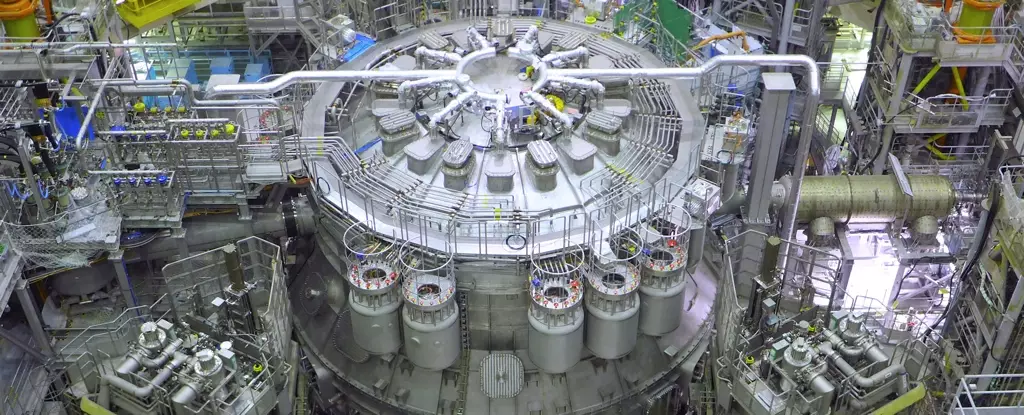Japan has recently inaugurated the world’s largest experimental nuclear fusion reactor, the JT-60SA. Many believe that fusion technology holds the key to solving humanity’s future energy needs. Unlike fission, which is currently employed in nuclear power plants, fusion involves the combination of two atomic nuclei rather than the splitting of one. The goal of the JT-60SA reactor is to explore the potential of fusion as a safe, large-scale, and carbon-free source of net energy. This revolutionary technology aims to generate more energy than it consumes. With its donut-shaped “tokamak” vessel containing plasma heated up to 200 million degrees Celsius, the JT-60SA reactor marks a significant milestone in fusion research, representing a joint effort between the European Union and Japan.
The ultimate objective of both the JT-60SA reactor and its counterpart in France, the International Thermonuclear Experimental Reactor (ITER), is to simulate the process that occurs inside the Sun. By coaxing hydrogen nuclei to fuse into one heavier element, namely helium, fusion reactors can release vast amounts of energy in the form of light and heat. These projects strive to achieve something that has long eluded researchers in the field – net energy, wherein the energy produced exceeds the energy input. The JT-60SA reactor, though a significant advancement, is still a stepping stone towards this ultimate goal.
Deputy project leader for the JT-60SA, Sam Davis, expresses his optimism, stating that the device will bring humanity closer to harnessing fusion energy. He highlights that the project is the result of collaboration between over 500 scientists, engineers, and more than 70 companies from Europe and Japan. Kadri Simson, the EU energy commissioner, lauds the reactor as the most advanced tokamak worldwide and considers its inauguration a remarkable milestone for fusion history. Simson also adds that fusion has the potential to become a pivotal component of the energy mix in the latter half of this century.
While the JT-60SA reactor is a noteworthy achievement, other research facilities are also making significant strides in fusion technology. Last December, the National Ignition Facility at Lawrence Livermore National Laboratory in the United States achieved “net energy gain” through a different approach called inertial confinement fusion. This method utilizes high-energy lasers directed at a small hydrogen-filled cylinder. The US government hailed this accomplishment as a “landmark achievement,” as it brings the world closer to achieving unlimited, clean power and reducing our dependence on carbon-emitting fossil fuels. It is worth noting that the US facility operates differently from the JT-60SA and ITER, showcasing the diversity of approaches and competition within the field.
One of the significant advantages of fusion over fission is its inherent safety. Unlike fission, fusion carries no risk of catastrophic nuclear accidents such as the one witnessed in Fukushima, Japan, in 2011. Additionally, fusion power plants generate far less radioactive waste compared to their fission counterparts. Proponents of fusion highlight these benefits as crucial factors in favor of this innovative energy source.
The inauguration of the JT-60SA reactor in Japan marks a remarkable milestone in fusion technology. With its significant potential to provide clean, safe, and abundant energy, fusion has captured the imagination of scientists and policymakers alike. While challenges and competition persist, the collective efforts of researchers worldwide bring us closer to realizing the dream of fusion power. As we strive towards net energy and overcome technical obstacles, fusion holds the promise of reshaping the energy landscape and securing a sustainable future for humanity.


Leave a Reply